SDSU is depending on Ryan Lindley’s offensive philosophy
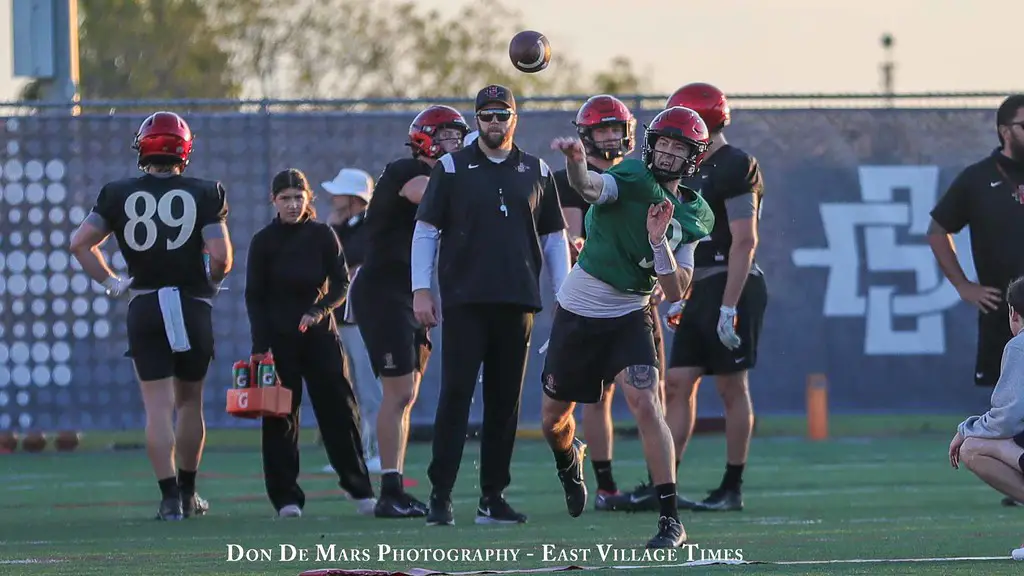
Ryan Lindley coaches the offense as Kyle Crum completes a pass. (Don De Mars/EVT)
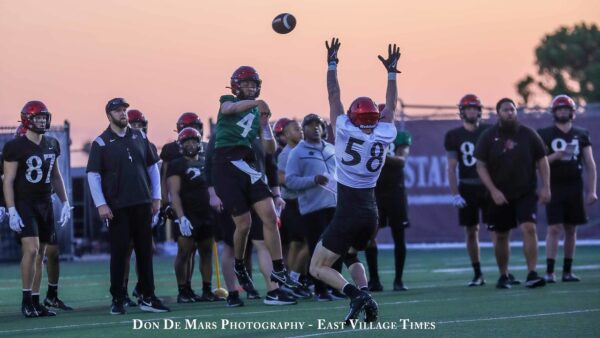
2022 was a whirlwind for SDSU offensive coordinator Ryan Lindley and his family. In the spring of 2021, Lindley moved to Starkville, Mississippi, to work as a defensive analyst for Mississippi State. Eighteen months later, he was on the road again.
SDSU head coach Brady Hoke needed someone to coach his team’s QBs midseason last year and turned to his former player and the school’s all-time leader passer. After excelling in helping Jalen Mayden transition from safety back to quarterback, Hoke promoted Lindley to offensive coordinator about two months ago.
In that time, Lindley hired a pair of assistants, formalized his playbook, decided upon terminology, set up installation schedules, started spring practice, and is in the process of bringing in two more assistants.
“The toughest thing for us as a staff is the change that’s gone on, especially at a place like this at San Diego State,” Lindley said on an upcoming episode of The SDSU Football Podcast. “People want to be here and have been here a long time. When something new comes up, the biggest thing for us was the amount of interest we had. Obviously, that speaks to the program, that speaks to the type of players we have, it speaks to coach Hoke, and obviously, just the city of San Diego and the alumni base here. It was really an eventful winter. We’ll just say that.”
Among the storylines surrounding the 2023 Aztecs, none is more compelling than discovering what kind of offensive coordinator Lindley turns out to be.
Player Driven
One positive the Aztecs have in their first few games is opposing defensive coordinators will not have much game film to base their schemes on because Lindley’s offensive system is so new. While SDSU’s coaches have certainly tried to keep that advantage, details of the offense have been slow to come out for another reason. SDSU’s attack will be player driven.
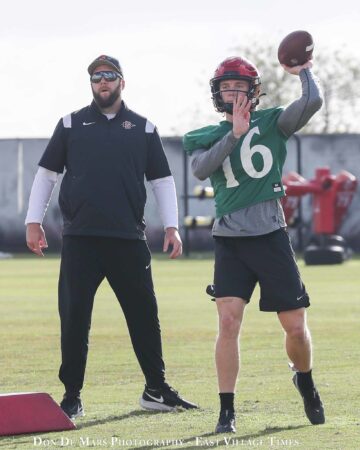
Every coach faces a tension between building their system to fit their players or fitting their athletes into their system. At San Diego State, Lindley is building his offense around his players’ current strengths while challenging them to develop new skills.
During spring camp, the Aztecs are learning new techniques that are designed to stretch and improve them as football players. How successful they are at mastering them over the summer in their time away from the coaches will determine if Lindley can include them in the offense.
“It’s a game, it’s kind of a juggling act that you’ve got to have,” Lindley explained. “There are going to be bedrock principles of what you’re going to be about, and you have to make sure guys are improving towards those areas. But, also, you’ve got to find what our guys do well and make sure those are well-rounded enough to take advantage of.”
Evaluation
Chief among this approach is evaluation. Lindley and his staff must know what their players do best. Many coaches choose to look for players who can perform certain skills precisely because it makes assessment easier. It is a simpler task to see if a QB can make one of three reads than to know if he is able to navigate in the pocket effectively with the rush bearing down on him.
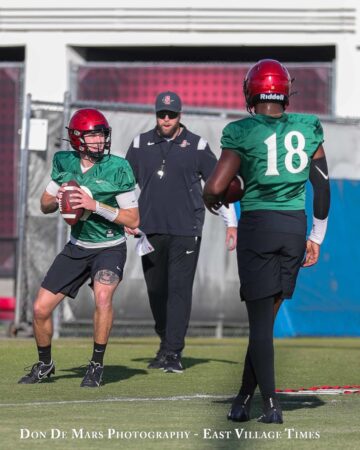
Every practice, every rep becomes magnified in discerning the overall ability of a player and how that fits with his teammates’ abilities. The key for the Aztecs is to identify their playmakers and build complements around them to accentuate their stars’ impact.
“Having some fluidity (on the depth chart) helps because sometimes – and it’s happened with guys – a younger guy does things well because early on, maybe we’re a little lighter on the load we’re giving guys. And sometimes, it’s because he’s going against the younger guys as well. It may be more those guys on defense not doing their job as opposed to him doing really well. It helps when we slide guys in and out to get the opportunity to get the reps in. You let guys earn their keep, in a sense. It’s been really fun. The competition in each one of our groups has been really great.”
Trust and Honesty
Recently, Lindley brought his QBs into his office for a self-evaluation. His aim was to hear their own thoughts on how spring camp was going and which of his messages were being received. As QBs typically are, they were their own worst critics, detailing all of their mishaps. It gave Lindley the opportunity to encourage them and help them see the forest from trees, but it also revealed another element of what SDSU’s offensive coordinator depends on in his craft.
Lindley builds trust with his players and uses that to evaluate more accurately. He has built an environment that mitigates the risk of subordinates being open with those in authority over them. From the recruiting trail to the QB room and the practice field, Lindley aims to empower those under him to fully embrace their roles and to work towards the common goal of winning championships.
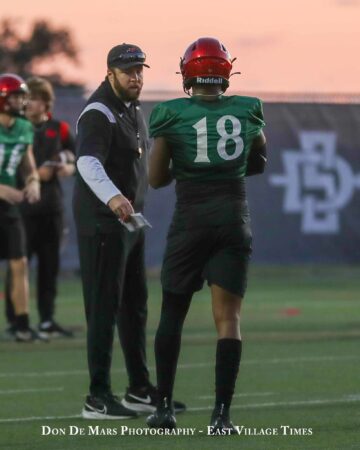
The Aztecs’ all-time leading passer has created this trust by taking the first step and being vulnerable and honest with his own mishaps. Lindley does not run from the fact that he is a young coach. He frequently and openly talks about his growth.
At the end of last season, Jalen Mayden finished with two turnover-plagued games. At the root of those struggles was a choice Lindley made. He chose to focus on Mayden’s development by asking SDSU’s signal caller to play outside of his strengths.
“I put a lot that on my plate,” Lindley said of Mayden’s struggles. “Looking back, as a young coach, it was probably a mistake. The time to develop some of those things. The time to push some of those things is now. I don’t want the quarterbacks to go out there and throw a bunch of interceptions in spring practice, but for them to do it now, knowing what they can or cannot do, or learning things that they need to learn at this point in the time of the year, is a heck of a lot better than doing it in the fall. Looking back on it, we needed to continue to adapt to what we were doing, but I think we could have done some things to put some window dressing on things that were helping Moose be successful.”
Creative Coaching
Not only does Lindley’s approach give license to his players to fully engage in the process of their own development, but it allows his offensive assistant coaches to take full ownership of the positions they lead. Together, the group is evaluating and dreaming of what SDSU’s offense can be. They have finalized the playbook, the installation schedule and are working to implement it in spring camp while artfully taking note of what their players can handle.
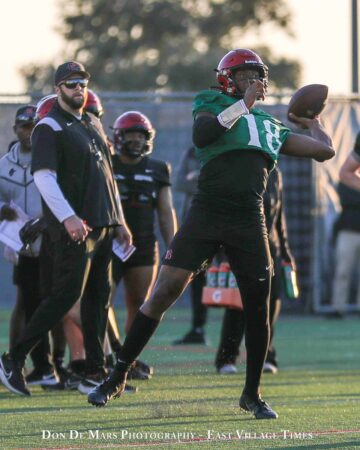
As SDSU’s offense goes through this transformation, the staff has had the freedom to create. Lindley’s job has been to sharpen the possible into what he actually wants to teach his players. That his method is working is evident in the fact that Lindley has had to reign the creativity of his colleagues at times.
“I’ve been around a couple of other places where they’re installing, bringing a new system in,” Lindley explained. “The beauty of what you’ve got to do; you’ve got to find a fine line of being inclusionary with your coaches. … But you also have to have a bedrock of what you do. There are times you’ve got to put your foot down. You get a little too all over the map. You’ve got to make sure you have that center and that focus. We did a good job of that. … we’re really figuring out what they’re really going to take hold of and take ownership of.”
“We want to be the hammer, not the nail”
Unsurprisingly given the person who hired him, toughness is an important aspect of Lindley’s offense. One of Lindley’s go-to quotes is, “we want to be the hammer, not the nail.” Its meaning has as much to do with Hoke as it does with Mike Leach. Leach, who Lindley coached under at Mississippi State, was famous for his “Air Raid” offense. SDSU will not adopt Leach’s pass-heavy playbook, but it will attempt to duplicate his ethos.
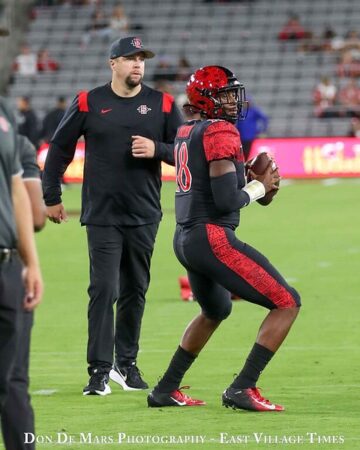
Win or lose, Leach attacked the opposition. He forced the defense to adapt to his designs. When someone lined up against Leach, he dedicated the pace of play, personnel packages and rewrote the conventions of football in the process. It is this aspect of Leach’s legacy that lives on with Lindley.
“Even when we turned this around (last year), the defense was playing really well,” Lindley said, explaining the quote. “For me, I want to make sure (the offensive players) know, ‘you’ve got to hold your water in this thing too. Don’t just think we’re here to service the defense. You’re here to impose your own will.’ It ain’t just we’ve got to react to what they’re doing. The beauty of offense is you should dictate the tempo. … we’ve got some really good players with a lot of experience under their belt to come back and really set the tone for 2023.”
How will it look?
Looking at the 2023 offense through the lens of Lindley’s philosophy, the shape of the system comes into focus. SDSU’s playmakers on offense are its TEs and RBs. Expect personnel packages that utilize this strength. Hoke mentioned Utah as a model for the Aztecs.
The Utes offense is run by one of Lindley’s mentors and friends, Andy Ludwig. Ludwig’s 2022 offense dressed a traditional run-centered attack with much of the features of the modern game. Utah averaged 39 points a game while running 55% of the time. With unproven receivers on the outside, a pair of NFL-caliber TEs, and a stable of terrific backs, from a skill position standpoint, they resemble the 2023 Aztecs.
For the comparison to truly hold, though, Mayden must approach Cameron Rising’s level of play. On paper, SDSU’s signal caller profiles very well to his Utah counterpart. They are similar in size, neither has elite arm strength, and both have the ability to make great plays inside and outside the offense’s designs. Where Mayden has room for growth is in his moxie.
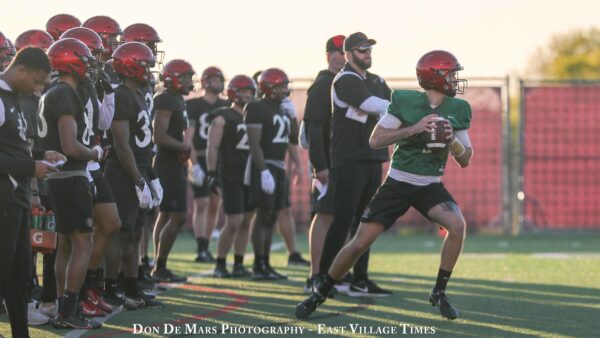
With a personality fit for a John Wayne Western, Rising inspired those around him. The Utes knew they had the best player on their team, and everyone played with that confidence. In Mayden’s brief time at QB last year, he was the most impactful athlete on the field. Playing that way in August starts with fully taking control of the Aztecs in spring camp and summer workouts.
“I think the biggest thing you’ve seen already is his pocket presence,” Lindley said, describing Mayden. “As a dropback passer, he’s gotten a whole lot better getting the reps that he’s gotten. … being in the pocket, it’s hard to replicate that. You just need reps at it. He needed more reps of us getting him in a dropback game where he had to work through his progressions and stay in the pocket.”
“He does phenomenally when we move him around, but we continue developing him as a player. He’s taken huge strides this spring as we keep him in the pocket, and he’s become a guy dissecting the defense. It’s been fun to see him develop, and we’re going to continue to push those things and make him a complete player.”
Built for 2023, built for SDSU
In Malcolm Gladwell’s book, David and Goliath: Underdogs, Misfits, and the Art of Battling Giants, he argues that the only way those on the margins compete with the establishment is to change the nature of the encounters to favor the underdogs. Even with inclusion to the Power Five and Snapdragon Stadium, SDSU will never be able to beat the blue bloods in college football at their own game. Only by carving out a niche where the Aztecs can be elite will they be able to topple the best in the business.
When Alabama or USC walk on the field, there is an aura because of the tradition of those programs. They are so steeped in the past the players play with a winning confidence. SDSU’s approach under Hoke is nearly the opposite.
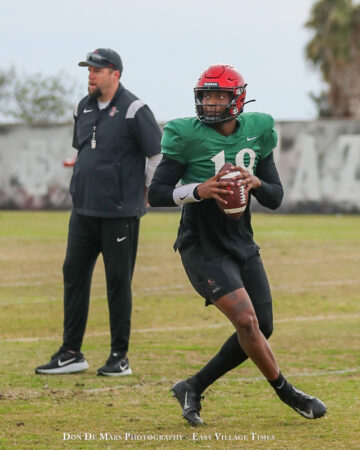
Like John Wooden teaching his players how to lace up their shoes on the first day of practice each season, the Aztecs’ staff rebuilds their team from the ground up every year. No matter how well or how bad the previous season went, SDSU starts fresh at Phase One each season.
Ideally, this method will allow them to be whatever is necessary on a given week to walk away with a victory. On one Saturday, if the staff feels its best chance of winning is running the ball 50 times and playing the battle of field position, they will do it. If the next week winning means passing 50 times and taking more risks to outscore the opposition, that is what they will do. For fans who love the predictability of known systems, the Aztecs will appear to have schizophrenia.
It remains to be seen if SDSU can play various styles at an elite level, but the payoff, if they can, is not hard to imagine. The Aztecs will be able to exploit any weakness they line up against. The challenge in attempting to be good at everything is failing to be great in any specific area. This is where Lindley’s skill comes to bear.
SDSU needs its offensive coordinator to be an artist. In real-time, Lindley must weigh the possible with the actual. He might notice an inadequacy in the opposition, but he also must know if his side has the skill to attack it.
Some might deem the attempt too risky, but SDSU is daring to be great. To be elite, SDSU is depending on Ryan Lindley’s offensive philosophy.
My earliest sport’s memory involve tailgating at the Murph, running down the circular exit ramps, and seeing the Padres, Chargers and Aztecs play. As a second generation Aztec, I am passionate about all things SDSU. Other interests include raising my four children, being a great husband and teaching high school.